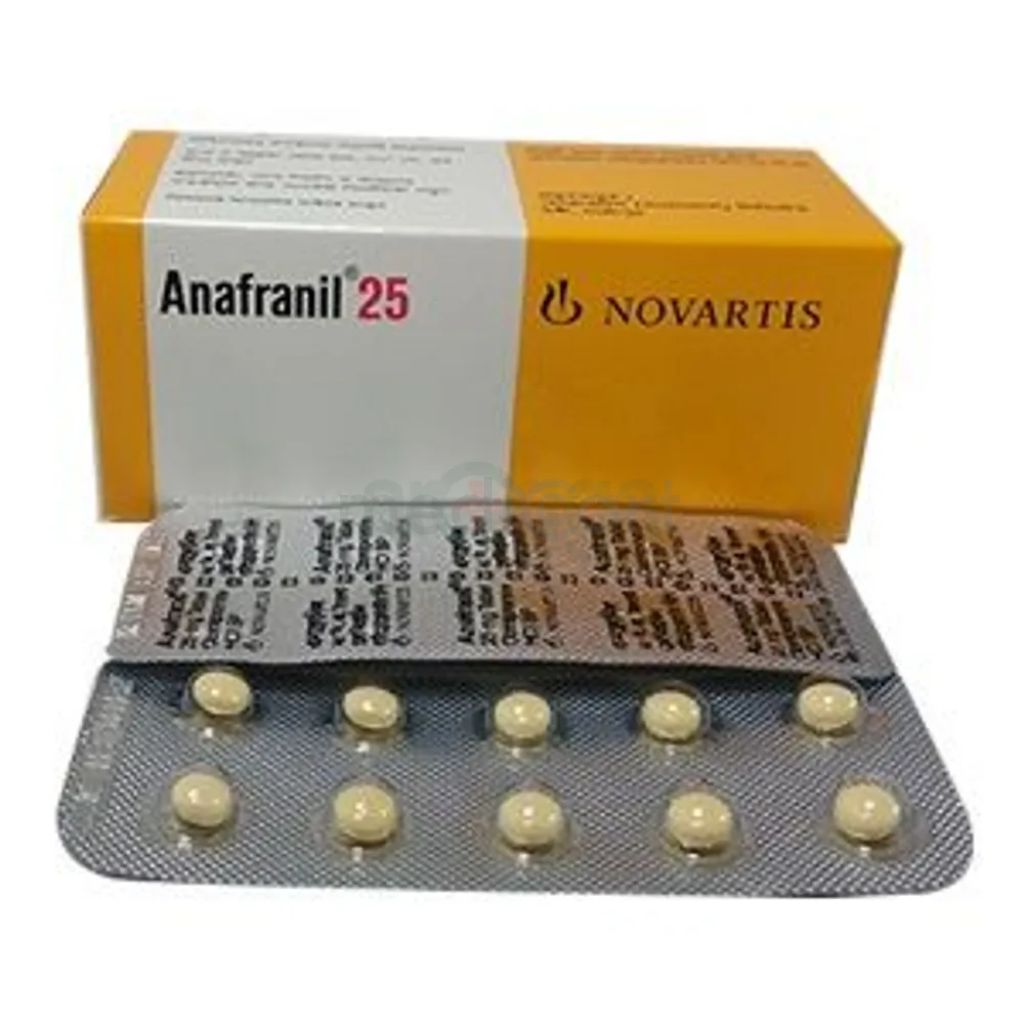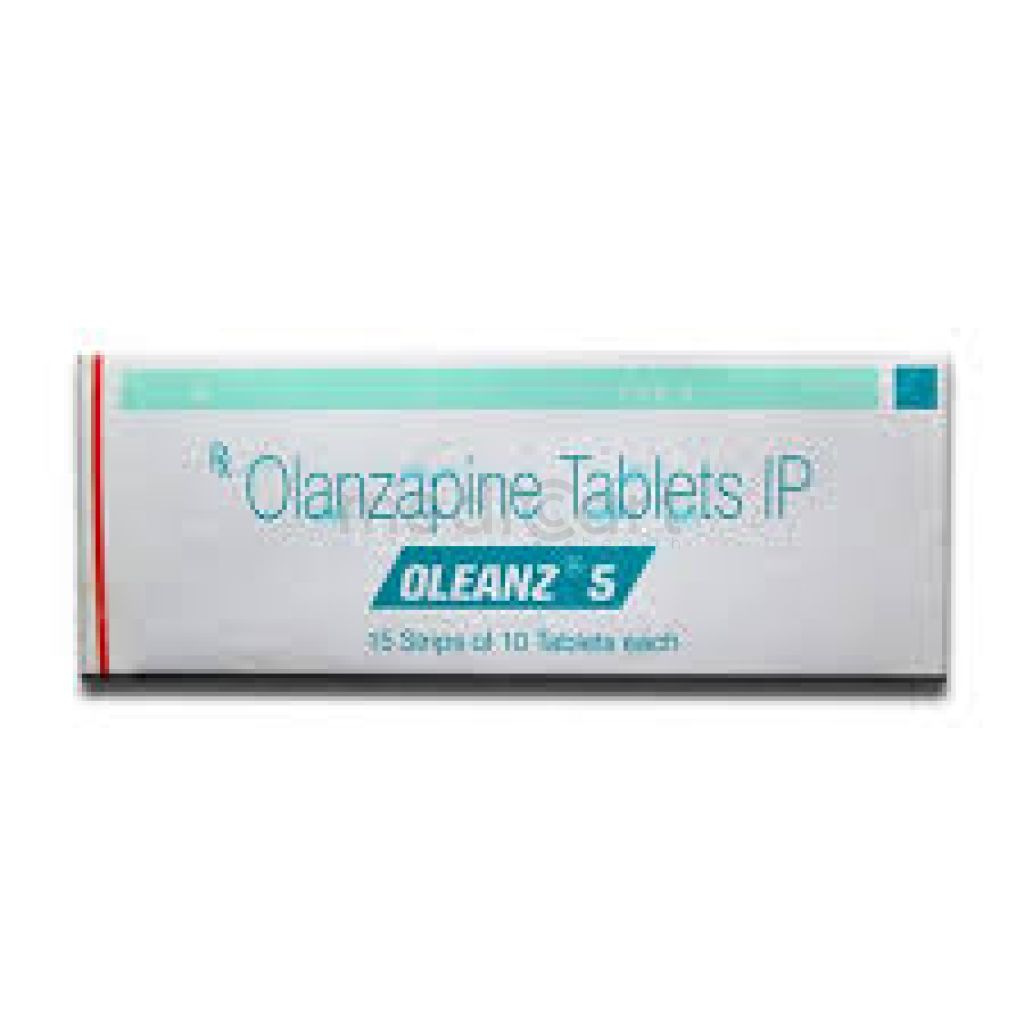

Anafranil - 25mg
Tablet
Pack Size :
10 Tablet x 1 Strip
Generics :
Clomipramine Hydrochloride
Manufacturer :
Novartis (Bangladesh) Ltd.
Best Price *
TK
92.50
* Delivery will be done in Dhaka city only.
More Information About - Anafranil - 25mg
Description
Generic Name
Clomipramine HydrochloridePrecaution
Cardiovascular insufficiency; narrow-angle glaucoma; urinary retention; history of epilepsy; renal or hepatic dysfunction; electroconvulsive therapy; hypotension; hyperthyroidism or concomitant treatment with thyroid preparations; suicidal tendencies; surgery; pregnancy and lactation; tasks requiring mental alertness; elderly; avoid abrupt withdrawal. Lactation: distributed in breast milk, do not nurse (AAP states effect on nursing infants is unknown but may be of concern)Indication
Depression, Panic disorder, Obsessive compulsive disorder, Cataplexy, Narcolepsy, Phobias, Premature ejaculation, Enuresis, TrichotillomaniaContra Indication
Hypersensitivity. Concomitant use of MAOIs; recovery phase following MI, heartblock or other arrhythmias; mania; childn.Dose
N/ASide Effect
>10% Xerostomia (84%),Headache (50-55%),Constipation (47%),Ejaculation failure (42%),Fatigue (35-40%),Nausea (30-35%),Impotence (20-25%),Weight gain (18%) 1-10% Weight loss (5%),Hepatotoxicity (1-3%) Frequency Not Defined Common, Dizziness, mainia, somnolence, tremor, Dyspepsia, Blurred vision, Urinary retention, Orgasm incapacity, libido change Potentially Fatal: Death, rare (except in patients with preexisting significant heart block and patients on MAOI therapy). Induction of mania in individuals with underlying manic-depressive illness or worsening of psychoses in already psychotic individuals.Pregnancy Category
Name : C
Description
Animal reproduction studies have shown an adverse effect on the fetus and there are no adequate and well-controlled studies in humans, but potential benefits may warrant use of the drug in pregnant women despite potential risksMode of Action
Clomipramine is a potent inhibitor of serotonin re-uptake in the brain. Significant antagonism at cholinergic and ?1-receptors. Weak antagonism at dopamine receptors. It has also antidepressant, sedative and anticholinergic effects.Interaction
Barbiturates increase metabolism of tricyclic antidepressants; conversely cimetidine, guanethidine, haloperidol and phenothiazines block the tricyclic metabolism. CNS effects of alcohol enhanced. Potentially Fatal: If clomipramine is to be substituted for MAOIs, at least 3 wk should elapse after discontinuing MAOIs. Risk of hypertension and arrhythmias if co-administered with adrenaline and noradrenaline.Pregnancy Category Note
Pregnancy Category: C Lactation: distributed in breast milk, do not nurse (AAP states effect on nursing infants is unknown but may be of concern)Adult Dose
Oral Adjunct for cataplexy associated with narcolepsy Adult: Initially, 10 mg daily gradually increased to 10-75 mg daily. Elderly: Dose reduction may be needed. Obsessive compulsive disorder; Panic disorder; Phobias Adult: Initially, 25 mg daily, gradually increased to 100-150 mg daily over 2 wk. Max: 250 mg daily. Elderly: Initially, 10 mg daily. Depression Adult: Initially, 10 mg daily; may increase gradually to 30-150 mg daily if needed. Up to 250 mg daily or more may be required in more severe cases. Elderly: Initially, 10 mg daily; may increase gradually over 10 days to 30-75 mg daily. Max Dosage: 100-150 mg daily.Child Dose
Obsessive-Compulsive Disorder <10 years: Safety and efficacy not established >10 years: 25 mg PO qDay initially Gradually increase to maximum 3 mg/kg/day or 100 mg/day, whichever is less May further increase to maximum 3 mg/kg/day or 200 mg/day, whichever is less; may give as single dose qHS once toleratedRenal Dose
N/AAdministration
Should be taken with food.Disclaimer
The information provided herein are for informational purposes only and not intended to be a substitute for professional medical advice, diagnosis, or treatment. Please note that this information should not be treated as a replacement for physical medical consultation or advice. Great effort has been placed to provide accurate and comprehensive data. However, Medicart along with its authors and editors make no representations or warranties and specifically disclaim all liability for any medical information provided on the site. The absence of any information and/or warning to any drug shall not be considered and assumed as an implied assurance of the Company.






